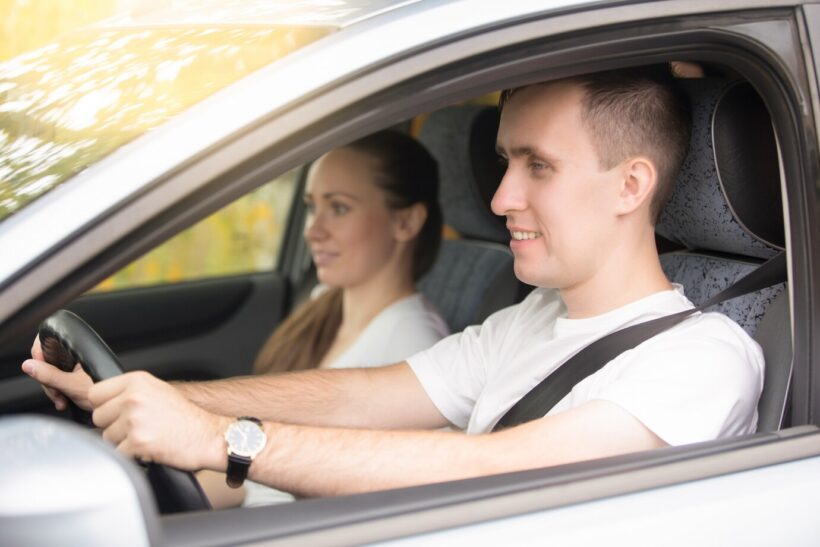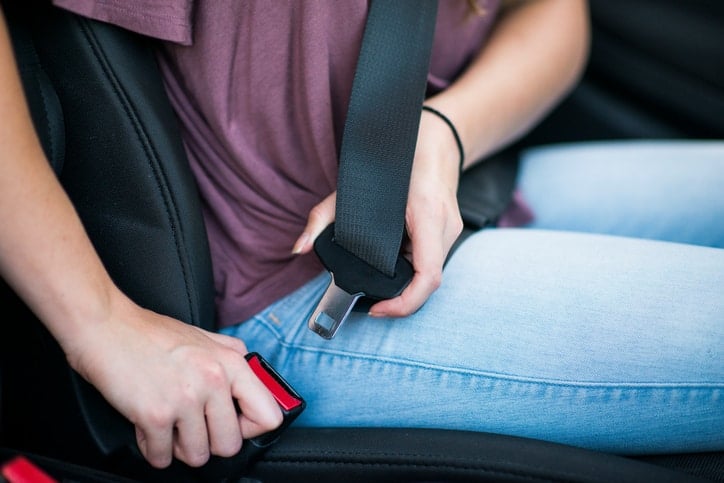Ensuring teen drivers stay safe is important to prevent accidents and encourage smart habits. Parents play a huge part in teaching their kids about driving, helping them navigate the roads responsibly, and ensuring they know how to stay safe whenever they’re behind the wheel.
Here’s an eye-opener: a study by The Children’s Hospital of Philadelphia & State Farm Insurance Companies showed something worrying. Even though 60% of teens admit that being new drivers can make things risky, only 15% see themselves or their pals as inexperienced.
We’re diving into this guide, highlighting why teen driving safety is crucial and how parents are the key to creating responsible and well-informed young drivers.
Getting Road-Ready: Essential Steps for Young Drivers

Heading out on the journey is a big deal, and being ready is vital. This part is about getting ready for driving and ensuring young drivers start on a strong foundation.
1. Driver’s Education Programs:
First off, there’s the Driver’s Education Program. Signing up for a good one is a crucial first step. These programs cover everything – from traffic rules to defensive driving tricks and how to behave on the road. It’s like building a solid set of driving skills.
2. Obtaining a Learner’s Permit:
Next up, getting a Learner’s Permit is a big deal. We’ll dive into how to get it, what you need, and why it matters. It’s like a supervised learning phase, where new drivers can get real experience with a licensed adult guiding them.
3. Parent-Teen Driving Contracts:
Then there’s the Parent-Teen Driving Contract. This is all about setting clear rules and expectations. It’s like a deal that boosts communication, spells out responsibilities, and ensures everyone is committed to driving safely. Teamwork between parents and young drivers is the key here.
Understanding Teen Driving Risks

Teens deal with extra risks on the road, making accidents more likely for them. Why? Well, there are a few reasons.
- Inexperienced Decision-Making: Since teens are new to driving, they might not realize when things get risky because they haven’t been out there much.
- Increased Risk Conditions: Teens often do things like drive at night or forget to use seatbelts, making accidents more likely.
- Developmental Brain Factors: Studies show that teen brains are still developing, especially in areas that control decision-making. That makes them more likely to take risks while driving. Stay safe out there!
Guiding Principles for Teen Drivers

When your teenager earns their driver’s license, instilling additional rules of the road beyond legal requirements is crucial. Establishing clear expectations beforehand minimizes conflicts, reduces the risk of accidents, and bolsters your confidence in your teen’s safety.
Navigating the road of rules involves a spectrum, covering seat belts, passengers, curfews, and combating distractions like smartphones. Involving your teen in rule creation fosters a sense of responsibility. Delve into various rules, including:
Distractions: A Focus on Safe Driving Practices
One crucial aspect is addressing driving distractions, a leading cause of accidents seen by Phoenix car accident attorneys at Sargon Law Group. Ban multitasking behind the wheel and emphasize alternatives, like stopping in a safe location for calls or setting GPS before departure. Lead by example, demonstrating responsible handling of distractions while driving.
Passengers: Navigating the Risks
Navigating the rules around teen passengers is pivotal. Familiarize yourself with state restrictions and consider additional guidelines based on your teen’s temperament and experience. Gradually easing restrictions as your teen gains experience is a strategic approach, balancing newfound freedom with safety.
Speeding: Understanding Consequences
Impart a clear understanding of the consequences of speeding. Highlight the potential for fatal crashes, costly tickets, points on a driver’s license, and revoked driving privileges. Consider making your teen responsible for any resulting fines or insurance rate hikes, fostering a sense of accountability.
Importance of Seatbelts: A Non-Negotiable Rule

Studies indicate that teens are less likely to wear seatbelts. Emphasize the non-negotiable rule of buckling up for your teen and all passengers. With only 51% of high school students consistently wearing seat belts, stress the importance of this simple yet life-saving habit, backed by potential fines in nearly every state.
Nighttime Driving: Gradual Introduction to the Dark
Ease your teen into nighttime driving. Despite state regulations, set an earlier curfew and extend it as your teen gains experience. Recognize the increased risks associated with nighttime driving, especially for new drivers, and prioritize safety over strict adherence to curfew times.
Drinking and Driving: A Zero-Tolerance Approach
Instill a zero-tolerance policy regarding driving under the influence. Make it clear that calling for a ride, regardless of time or location, is encouraged and expected. Pledge to withhold punishment and questions fosters an environment where safety precedes potential consequences.
Schoolwork and Responsibilities: Connecting Driving Privileges to Accountability
Consider making driving a privilege contingent on academic performance and responsibilities. Linking good grades and chores to driving privileges emphasizes the importance of accountability and encourages your teen to balance academics and duties with the newfound freedom of driving.
Vehicle Maintenance: Teaching Responsibility Behind the Wheel
To increase safety and avoid breakdowns, ensure your kid learns the fundamentals of car maintenance. Show them these techniques:
● Verify the fuel level regularly.
● Check and inspect tires before every drive and maintain the recommended tire pressure.
● Oil, brake, power steering, and windshield washer fluids should all be checked.
● Follow the suggested oil change schedule (owner’s handbook or usually every 3,000 miles).
● Windows and mirrors should be kept spotless from the inside as well.
A maintenance diary should be kept in the glove compartment. While doing so, demonstrate how to read a tire gauge and check the oil.
Weather Conditions: Prioritizing Safety in Adverse Conditions
Establish clear guidelines for driving in various weather conditions. Emphasize the importance of safety, allowing your teen to prioritize pulling off the road during a storm over adhering strictly to curfew. Communicate that safety always takes precedence in adverse weather conditions.
Encouraging Open Communication: Building a Supportive Environment
Foster open communication by establishing a supportive environment. Encourage your teen to express concerns and questions without fear of judgment. This supportive dynamic enhances your ability to guide and address any challenges or uncertainties that may arise during the learning process.
The Bottom Line

Prioritizing teen driving safety and parental involvement are integral to shaping responsible young drivers. Addressing risks, establishing clear rules, and fostering open communication create a foundation for a secure and confident driving experience. Remember, instilling these principles today ensures a safer tomorrow.
In challenging situations, professional guidance is invaluable. If you find yourself in need, don’t hesitate to reach out to the legal experts for representation in the event of an accident or injury. Experienced car accident attorneys are able to assist you, ensuring you confidently navigate legal complexities. Your safety is a priority, both on and off the road.

